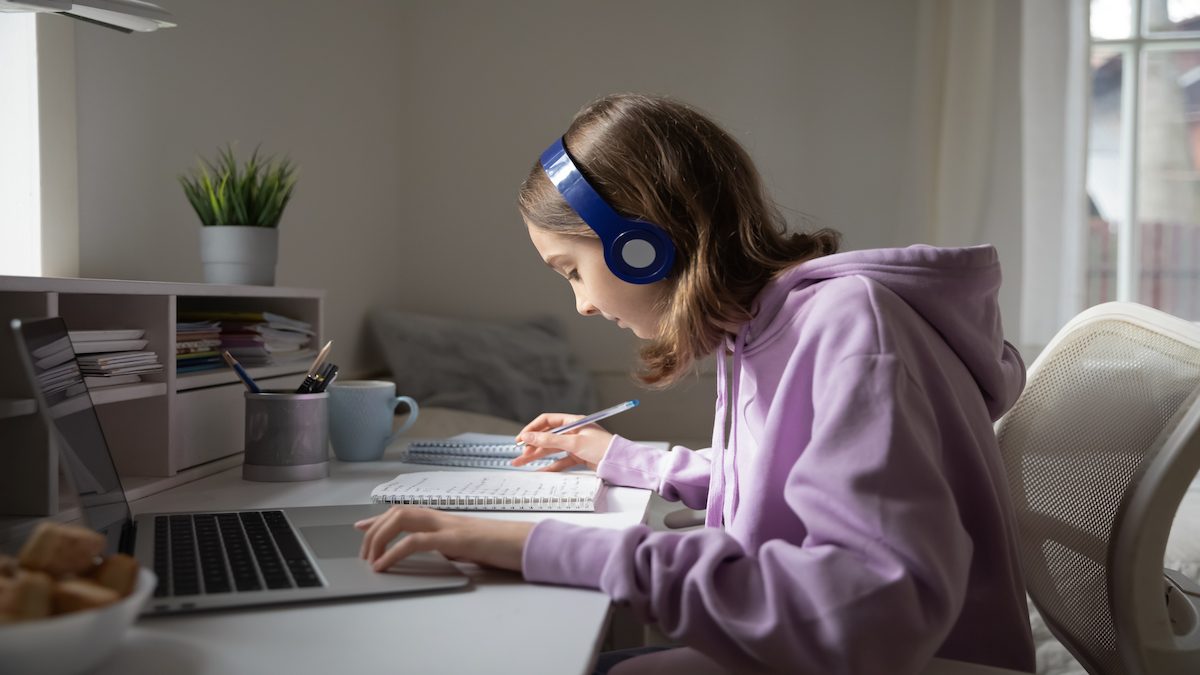As children and young people begin to return to school to engage again in face-to-face learning, the sighs of relief are many.
From teachers, who can get back to something more like traditional classroom instruction. From pupils, who can now interact with their peers not only in the classroom, but outside it. From parents, who have suffered home-schooling but are glad to see their children back in school.
In the midst of this, might we revert all too quickly to the way things were? Is there nothing to be learned from what happened during the pandemic? As part of my work at the University of Dundee, I have compiled a synthesis of research evidence from 1,355 papers on blended and online learning which informs this debate. In brief, this found blended learning to be more effective than online learning and more effective than 100 per cent of traditional classroom instruction. Of course, these were research papers and might bear little relationship to what schools could provide at very short notice in the heat of battle in a pandemic. Doubtless schools varied in how well they rose to this almighty challenge, and probably teachers within schools varied too. Indeed, a number of parents have been in touch with me to say the research results do not reflect their recent experience of reality.
Of course, during the pandemic most pupils were forced into wholly online learning, which would usually be reserved for those living in remote areas who could not access ordinary schools. But post-pandemic, should it just be flipping from totally online to totally face-to-face learning? Of course, this has never quite been the case, as even during face-to-face teaching homework is often assigned which pupils complete at home, perhaps “assisted” by some conversations with friends on Facebook, WhatApp, or other social media software.
Could blended learning be effective for most if not all students? There are many studies in many different subject areas which show that when students spend some time on independent work in the morning, then come to school in the afternoon to discuss their findings, collaborate in peer groups to bounce different perceptions off each other, and receive more detailed and structured feedback from their teacher, they learn better. Of course, this depends on a short gap between studying the material independently and having the opportunity to understand it more deeply and consolidate it, otherwise the demands on memory would be too great.
This is all very well, you might say, but would pupils in age-appropriate groups be at home in the morning hopefully studying while their parents were out at work? Would they be able to focus, in the absence of parental supervision? My guess is that if the pupils knew that they would be coming to school in the afternoon, when any ignorance would be rapidly exposed, they would certainly apply themselves.
An issue here is the often-unspoken childminding function of schools. Parents expect schools to educate, but even if they can’t do this all that well in particular cases, at least the child is not at home bothering the parent or parents, or creating chaos in the absence of both parents. However, if pupils have something constructive to do (obviously at the right level of challenge for each pupil, so differentiation is very important), which they know they will be held accountable for that same afternoon – or they will look silly in front of their peers – they may be better behaved at home than parents might expect.
Ah, you might say, but what about children who do not have access to reliable devices or the internet at home? This is certainly a problem, and access to computers is one thing, but access to the internet is quite another.
On the other hand, with blended learning, each child is in school every afternoon, which enables the teacher to give out assignments to be completed the next morning. If these assignments are self-contained (perhaps given out on flash drives), no access to the internet is needed. If access to the internet is required, some children may be able to visit the local library to access it (unless the library is too far away or until the library’s internet resources are overwhelmed, of course). Otherwise, these children will need to go into school in the morning also, not to be involved in classroom instruction, but to use the school’s internet facilities for their independent research. They could bring in their own devices to link to the school’s internet.
Access to actual computers is less of a problem. Many charities and governments have been working hard to supply computers and data to disadvantaged children, and although the numbers supplied still fall far short of the numbers required, this problem has at least been ameliorated.
So, blended learning could work.
The research study gives more details about where it works best. Primary schools (including nursery schools) were more effective than secondary schools in delivering digital learning. Girls tended to do better than boys (so boys should not pretend to be computer whizz-kids). Pupils perceived by the school as being of “lower ability” tended to do remarkably well, contrary to school expectations. Digital learning was also effective with many categories of pupils with special needs. Will blended learning be given an opportunity to work? We will see.
Keith Topping is Professor of Educational & Social Research at the University of Dundee
Photo: Shutterstock.com/fizkes




